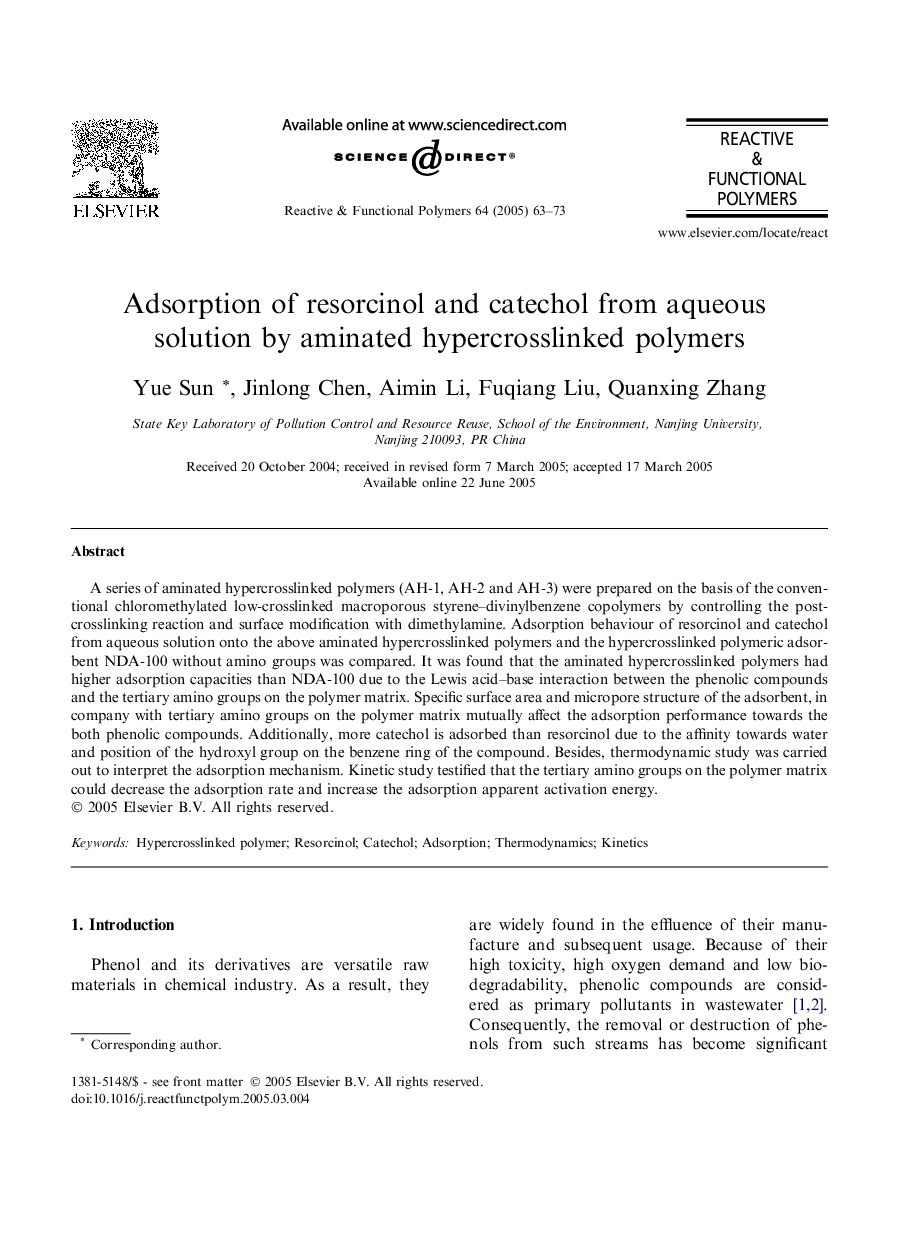| Article ID | Journal | Published Year | Pages | File Type |
|---|---|---|---|---|
| 9562933 | Reactive and Functional Polymers | 2005 | 11 Pages |
Abstract
A series of aminated hypercrosslinked polymers (AH-1, AH-2 and AH-3) were prepared on the basis of the conventional chloromethylated low-crosslinked macroporous styrene-divinylbenzene copolymers by controlling the post-crosslinking reaction and surface modification with dimethylamine. Adsorption behaviour of resorcinol and catechol from aqueous solution onto the above aminated hypercrosslinked polymers and the hypercrosslinked polymeric adsorbent NDA-100 without amino groups was compared. It was found that the aminated hypercrosslinked polymers had higher adsorption capacities than NDA-100 due to the Lewis acid-base interaction between the phenolic compounds and the tertiary amino groups on the polymer matrix. Specific surface area and micropore structure of the adsorbent, in company with tertiary amino groups on the polymer matrix mutually affect the adsorption performance towards the both phenolic compounds. Additionally, more catechol is adsorbed than resorcinol due to the affinity towards water and position of the hydroxyl group on the benzene ring of the compound. Besides, thermodynamic study was carried out to interpret the adsorption mechanism. Kinetic study testified that the tertiary amino groups on the polymer matrix could decrease the adsorption rate and increase the adsorption apparent activation energy.
Related Topics
Physical Sciences and Engineering
Chemistry
Organic Chemistry
Authors
Yue Sun, Jinlong Chen, Aimin Li, Fuqiang Liu, Quanxing Zhang,
